A subjective and non-exhaustive buyer’s guide to synchronised meeting and conferencing tools.
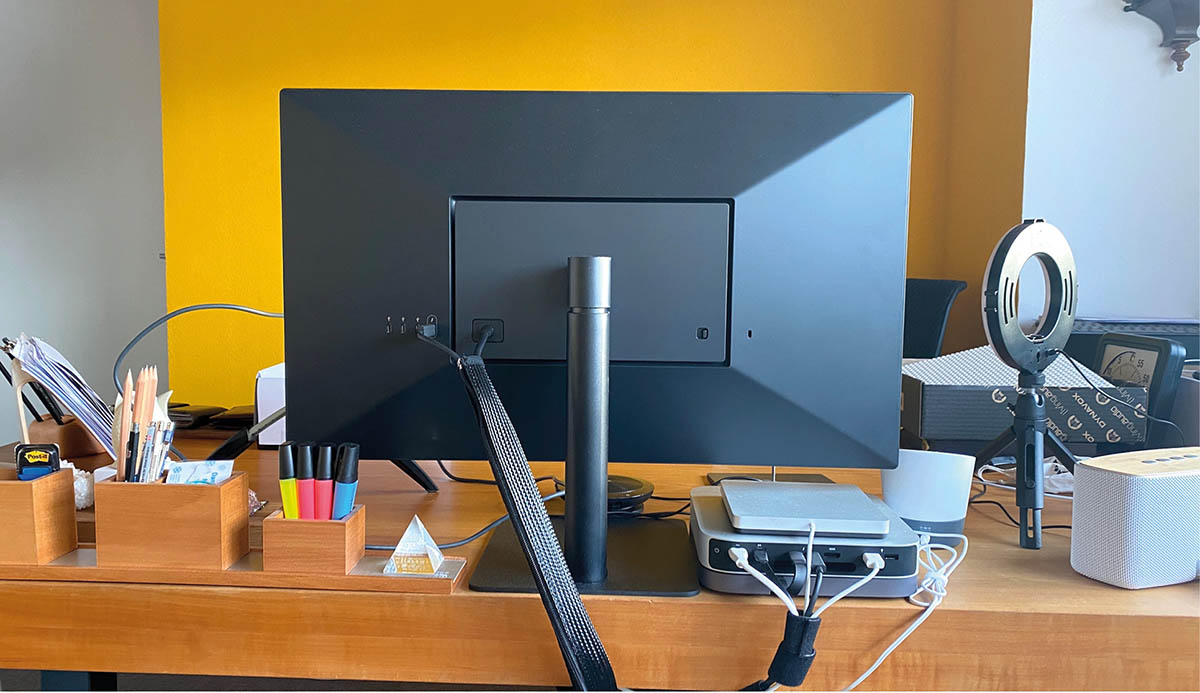
I wrote my first text on “standard software for cooperation” in 1999 (Stoller-Schai 1999) and my last buyer’s guide on synchronised tools 13 years ago (Stoller-Schai 2008); so it is time for another market overview. With the Covid pandemic, the market for web conferencing tools has exploded. Terms like “zooming”, “teaming” etc. have become well-established. Web conferencing is no longer limited to online meetings in which one participates simultaneously – i.e. synchronously – with camera and audio support. Today, web conferencing encompasses so much more than that. It is generally about all forms of simultaneous activities that take place via the internet. This includes learning processes, innovation processes, work meetings, informal exchange rounds, playful activities, simultaneous text writing, developing programme code, coaching and consulting, live support, and many others.
1. Introduction
This article provides an overview of this expanded form of web conferencing; a “WebConferencing expanded”, if you will. It is a subjective and non-exhaustive selection of common tools and systems currently in use. There are simply too many tools and systems. It is hardly possible to present a comprehensive and conclusive list of tools and systems that would fall under the category of “WebConferencing expanded”, as the market is difficult to survey and not all tools and systems that exist are important in the DACH region. It can also be assumed that the market will continue to consolidate. Start-ups will emerge and, in some cases, go out of business again, established players will be bought up or no longer develop for a variety of reasons, and new innovative products are constantly being created.
2. Definitions
What is meant by web conferencing? In the past (5-10 years ago), it was easier to define: WebConferencing refers to a system that allows me to communicate with others at the same time via the Internet – with video and audio support and with the possibility to share screen.
Now it has become a bit more complex: “WebConferencing expanded” stands for a whole range of tools and systems with which I can exchange information with others at the same time via the Internet. Video and audio support and the ability to share all kinds of screen formats have become standard. In addition, group work is possible such as writing together on digital whiteboards, the possibility to create surveys quickly and easily, to make results immediately visible, to work simultaneously on a digital artefact (document, design, presentation, business plan, programme code) or to move through digital 3D worlds together.
In short: “WebConferencing expanded” means the whole variety of collaborative activities with others via the internet – with all devices and on all screen formats
“WebConferencing expanded” means the whole variety
of collaborative activities with others via the internet
– with all devices and on all screen formats.
What does „collaboration“ mean?
Collaboration refers to simultaneous forms of cooperation. Collaboration can be defined as follows:
Definition of collaboration
“The direct and mutually influencing active engagement of two or more people towards common goals in order to solve or cope with a task or problem. This takes place within a jointly designed and negotiated context (shared meaning space, cooperative setting) in physical co-presence and using shared resources (collaborative action).” [Stoller-Schai 2003, 47]
eCollaboration (or digital collaboration) is collaboration in a computer-mediated context. eCollaboration can be defined as follows:
Definition of eCollaboration (Digital Collaboration)
“The direct and mutually influencing active engagement of two or more people towards common goals in order to solve or overcome a task or problem. This takes place within a jointly designed and negotiated, computer-mediated context (shared meaning space, cooperative setting) and using shared resources.” [Stoller-Schai 2003, 47f.]
3. Example of „WebConferencing expanded“
“WebConferencing expanded” includes more than the classic web conferencing functions. There are now only a few things that cannot take place simultaneously via the internet. This also applies to haptic activities.
A good example is Lego® Serious Play® (LSP) workshops. It is true that online LSP workshops and face-to-face LSP workshops cannot be directly compared, as they must be structured and guided differently. But the experience of the last few months has shown that they can be conducted both online and face-to-face.
For online delivery, a whole range of tools and systems are needed to enable collaborative working. Fig. 1 shows how an online CSP workshop can be conducted:
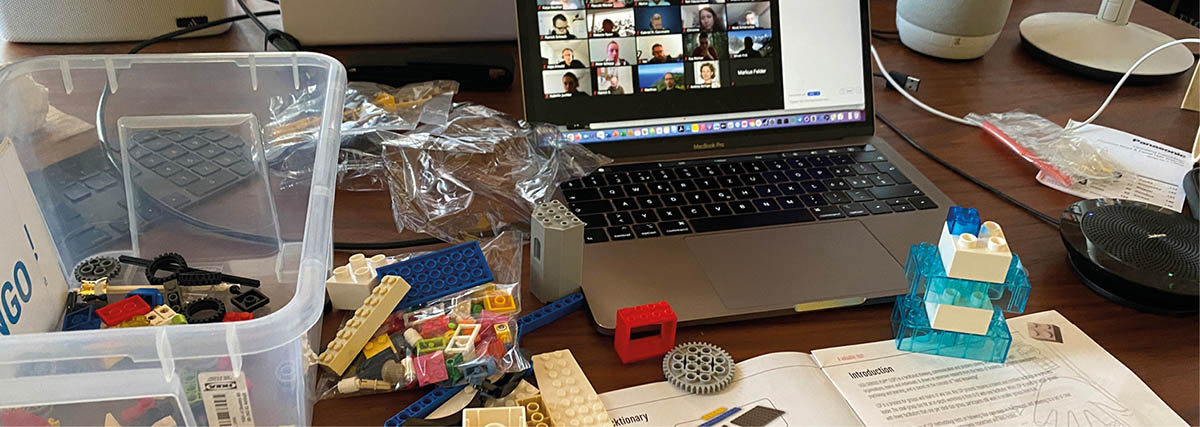
- Each person involved builds and works on their own.
- The exchange among each other takes place in breakout rooms.
- Panel discussions are held together in the main room.
- Partial results are collected, evaluated, and prioritised on a digital whiteboard
- Shared models are created with the support of multiple camera setups and via audio instructions. This requires new set-ups and clearly guided collaborative building processes (Fig. 2).
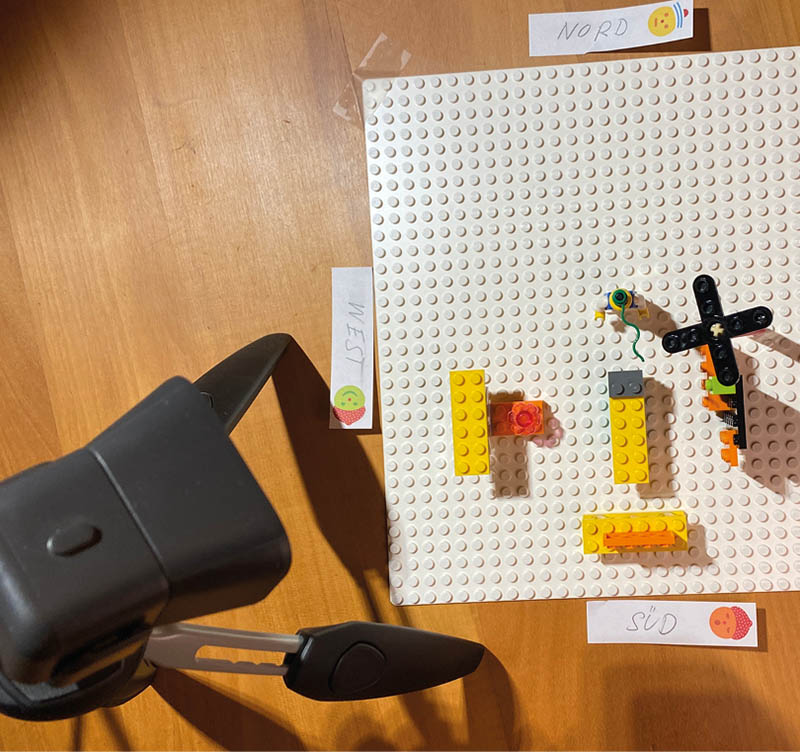
This example, which is only briefly given here, should make it clear that in most cases, different tools and systems that complement each other are needed for differentiated learning and work scenarios.
Some important functions that are needed in such “WebConferencing expanded” scenarios are listed in the following table. Admittedly, it is a small list. There are numerous other functions that could be listed here and that could be used to classify and select synchronous meeting and conferencing tools.
The selection of functions listed here includes the essential activities that I believe are needed for differentiated learning and working scenarios:
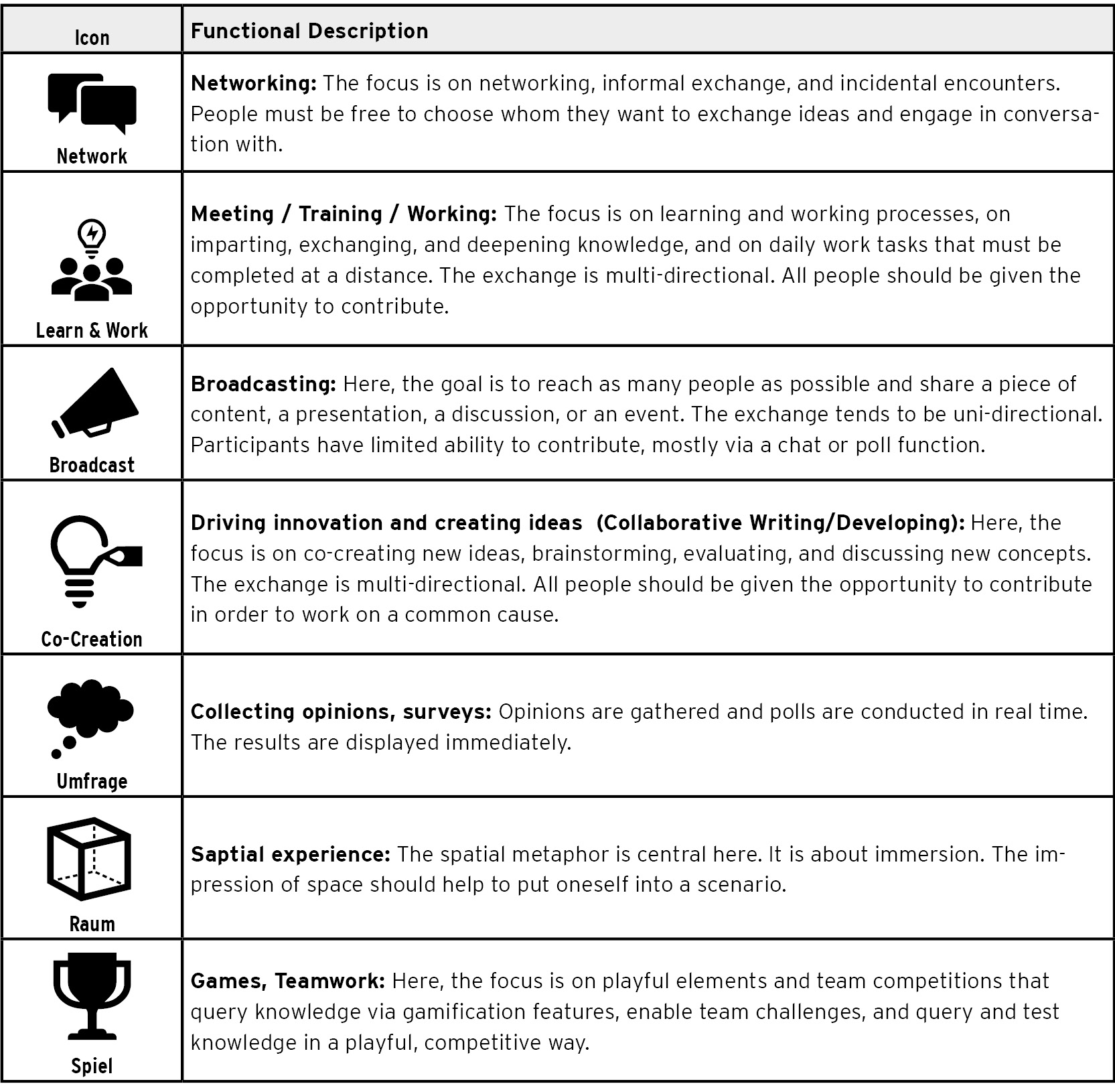
4. Core applications and peripheral applications
What synchronised meeting and conference tools are currently available that offer the functions described above? Where can you get information? Which ones should you buy?
If you want to get a general overview, you would be well advised to have a look at Capterra’s website.
Capterra distinguishes at least four categories that point in the direction of “WebConferencing expanded:
- WebConferencing Software: https://www.capterra.com/web-conferencing-software/
- VideoConferencing Software: https://www.capterra.com/video-conferencing-software/
- Virtual Event Software: https://www.capterra.com/virtual-event-software/
- Meeting Software: https://www.capterra.com/meeting-software/
In many cases, this “looking around freely on the market to see what is available” only makes limited sense, as the choice of tools and systems is already largely predetermined by the company’s own IT department. The choice for the “core applications” for synchronised meetings and conferences is fixed and there are only a few degrees of freedom to deal with “peripheral applications” regarding special functions.
4.1 The core application
In a corporate context, the choice of the core application is always a strategic decision. It is not just about the best tool with the best features. A synchronised meeting and conferencing system must fit the company’s IT strategy. The goal should be to use as few tools and systems as possible, but then to use them consistently for all learning and work processes of the company.
The following table shows typical core applications that are used for synchronised meetings and conferences in companies:
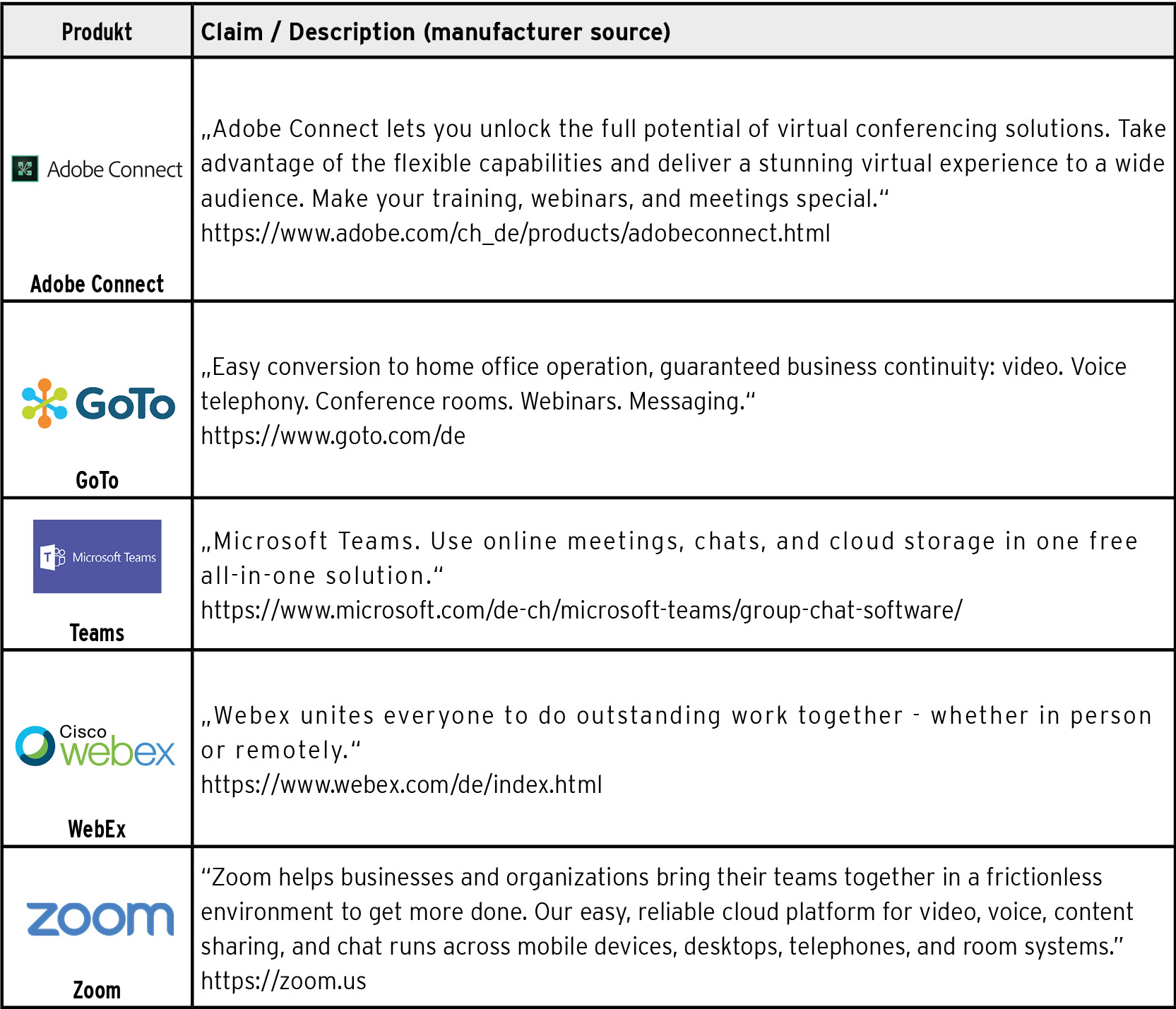
4.2 The peripheral applications
The peripheral applications complement the core application with supplementary functions that can be used for interaction, innovation, group work and more. While the core applications cover important basic functions, the peripheral applications can be used to complement “WebConferencing expanded” scenarios with innovative, collaborative, and creative functions:

4.3 Intended use
In the following table, the tools and systems are also listed in terms of their main purpose. This represents a focus and at the same time a certain simplification. The listed tools and systems can of course also be used for other purposes beyond this main purpose.
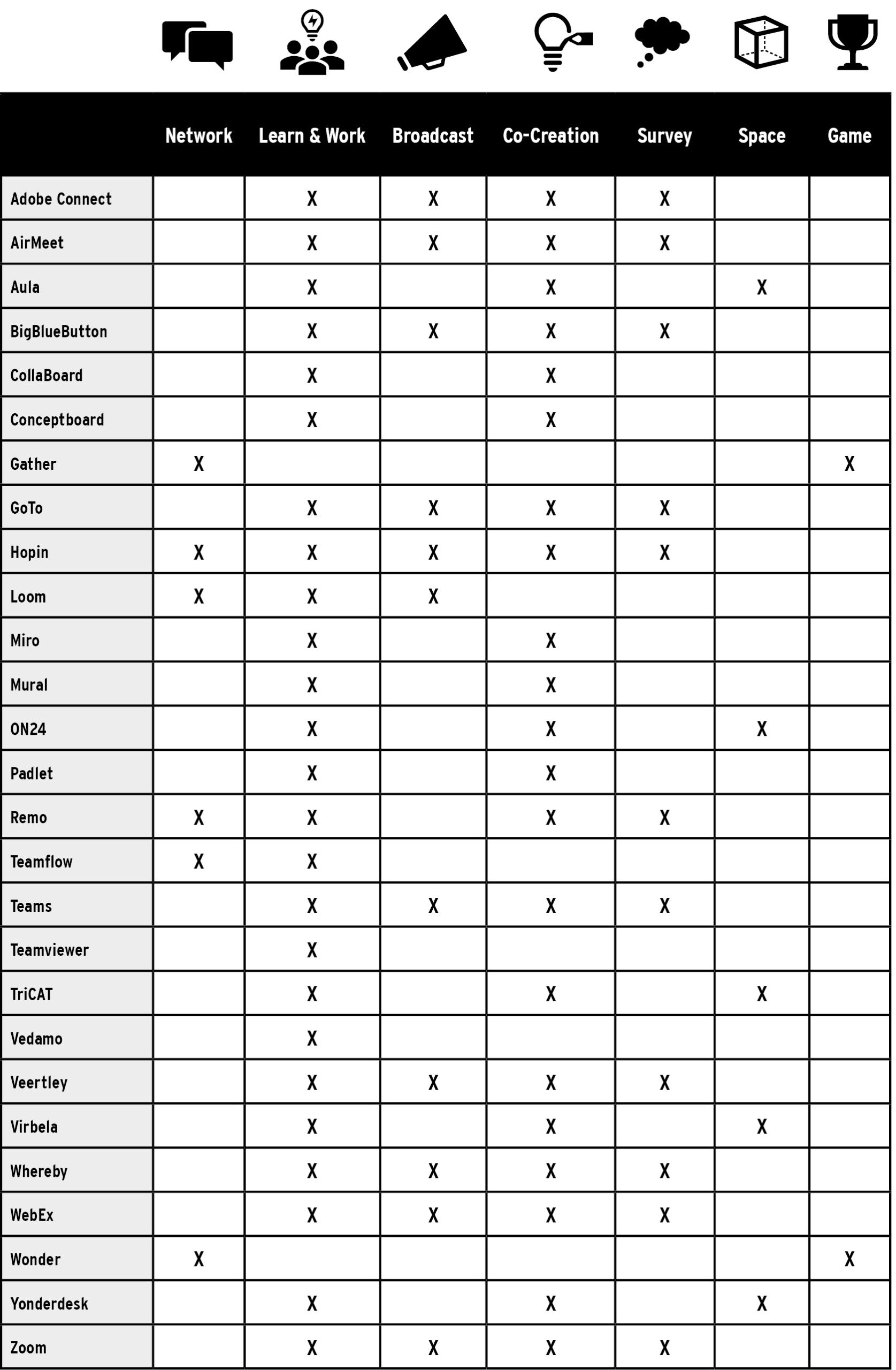
5. Outlook
“WebConferencing expanded” can be a centrepiece of a collaborative learning and working culture. It can be used to hold daily meetings and workshops as well as brown bag sessions, BarCamps, conferences and press meetings. The technology to do this has become massively easier and more performant. This article has briefly shown which tools and systems are available for this purpose. In many companies, the focus will be on the core applications. It is already a great challenge to use these efficiently and effectively, or to build learning and work scenarios on them and to develop the necessary competences in the company. Beyond that, however, the peripheral applications offer the innovative potential to think beyond the classic purpose of web conferencing solutions and to implement new forms of internet-supported learning and work. Many of the peripheral applications offer free versions or demo versions that can be tried out and tested. Every company should have a scouting and testing team that tests, tries out, and introduces such new tools and systems into the company if they can add value for employees and customers.
Footnotes:
1 All links in this article were checked in April 2021 and were valid and active at that time.
2 The claims and short descriptions to the web links come from the websites of the manufacturers.
Sources:
Stoller-Schai, Daniel (1999): Standardsoftware für Kooperation in Unternehmensnetzwerken. Universität St. Gallen, unveröff. Seminarpaper.
Stoller-Schai, Daniel (2008): Marktübersicht WebConferencing Systeme. In: Handbuch E-Learning. (Hrsg.) K. Wilbers / A. Hohenstein. Erg.-Lieferung Oktober 2008. Wolters Kluwer.
Stoller-Schai, Daniel (2003): E-Collaboration. Die Gestaltung internetgestützter kollaborativer Handlungsfelder. Dissertation Universität St. Gallen 2003.
Stoller-Schai, Daniel (2020): WebConferencing: Einfach loslegen bis systemisch angehen. SI Magazine. Swiss Informatics Society‘s new online Magazine. https://magazine.swissinformatics.org/en/webconferencing-systemisch-angehen/
For further browsing:
Other tools that are also interesting but could not be explicitly included here. Access to the links is of course more convenient via the online version of the eLearning Journal. Have fun browsing further!
https://www.wedo.swiss/de/: “WEDO lets you prepare for team meetings, write minutes in real time and track assigned tasks from one meeting to the next.”
https://wire.com/de/: “Secure communication, phone and video conferencing and file sharing. All protected by end-to-end encryption.”
https://www.mikogo.de: “Secure online meetings made in Germany”
https://clickmeeting.com: “Conduct large virtual events, webinars, video conferences and online meetings with a secure EU-based platform.”
https://fastviewer.com/de/: “Online meetings and remote support.” (Matrix42)
https://www.join.me/de: “Teleworking tools that keep your business running.”
https://www.spreed.eu/de/: “Enterprise video conferencing with office collaboration and content sharing.”
https://www.pgi.com/de/products/globalmeet/: “GlobalMeet provides meeting and event solutions for the modern workplace. We provide webcasting, audio, web and video tools that people use every day to get their work done.”
https://www.readytalk.com: “Meetings: Collaborative audio, web, & video. Webinars: Webcam and content streaming. Webcasts: High-capacity global presentations.”
https://www.bluejeans.com: “SIMPLE. SMART. TRUSTED. Video Conferencing for the Digital Workplace.”
The Author:
 Daniel Stoller-Schai, Dr. oec. HSG
Daniel Stoller-Schai, Dr. oec. HSG
is an accomplished Digital Collaboration & Learning expert and Managing Director of Collaboration Design GmbH. Daniel Stoller-Schai is convinced through his many years of practice that collaboration is the key to success in network organizations. As a change companion, he develops the strategies, methods and competencies for this together with his clients. As a manager for digital learning and work technologies, he has implemented customer projects at Phonak, UBS, CREALOGIX as well as in other companies and startups and has gained experience in the global deployment of Internet-supported learning and work projects. He also shares this experience as a program leader at the Institute for Communication & Leadership, Lucerne (CAS Work 4.0 | Transformation Toolbox | Digital Deep Dive) and as Head Advisory Board of the LEARNING INNOVATION Conference.
Contact:
Daniel Stoller-Schai
Change Companion | Founder
Collaboration Design GmbH
daniel.stoller-schai@collaboration-design.ch
www.collaboration-design.ch





